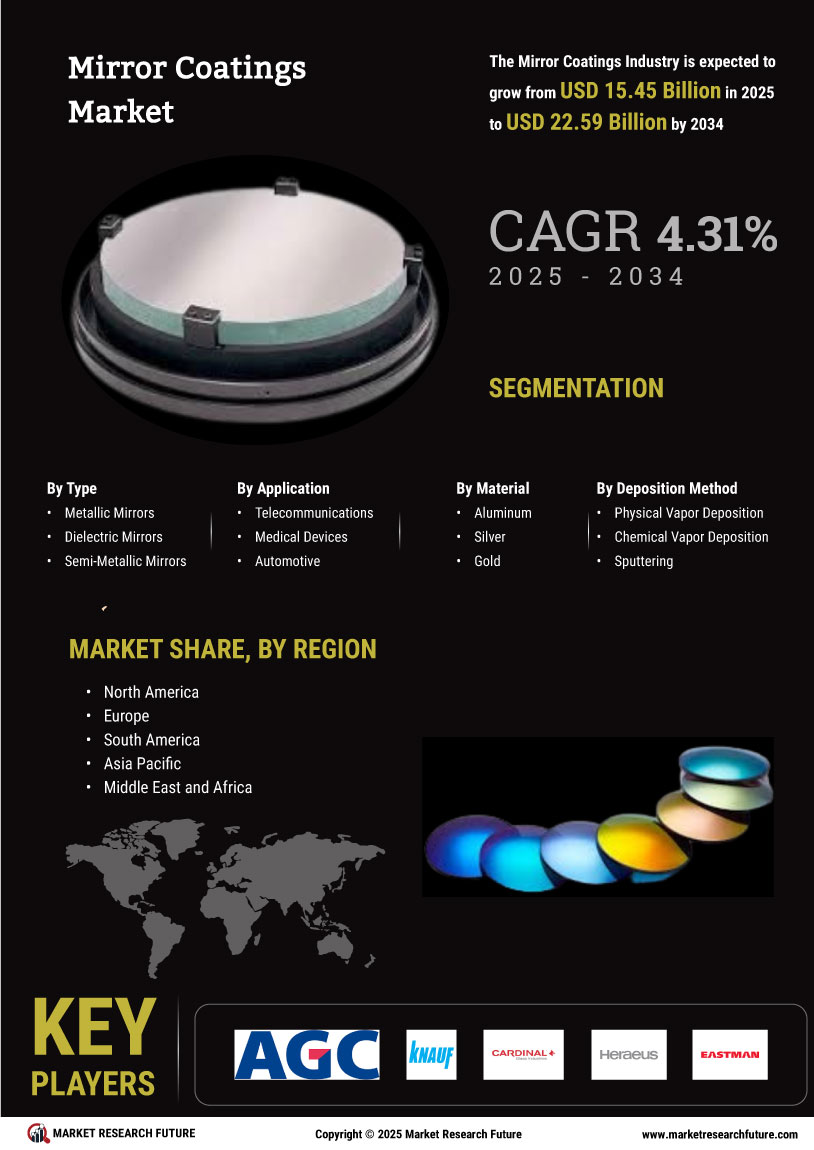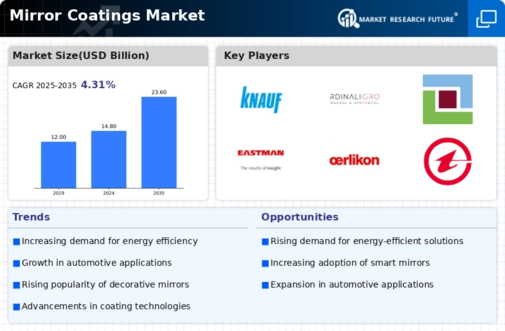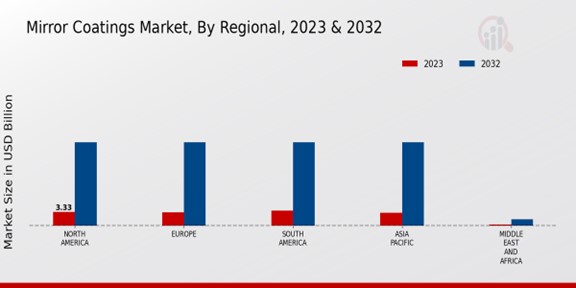Market Growth Projections
The Global Mirror Coatings Market Industry is projected to experience substantial growth, with estimates indicating a market value of 14.8 USD Billion in 2024 and a potential increase to 23.6 USD Billion by 2035. This growth trajectory suggests a robust demand for mirror coatings across various sectors, including automotive, renewable energy, and architecture. The anticipated CAGR of 4.31% from 2025 to 2035 indicates a sustained interest in innovative coating solutions. The market's expansion is likely to be driven by technological advancements, increasing applications, and a global focus on sustainability.
Growth in Automotive Sector
The automotive sector's growth plays a pivotal role in shaping the Global Mirror Coatings Market Industry. With the increasing production of vehicles and the rising demand for advanced safety features, the need for high-quality mirror coatings is on the rise. Automotive manufacturers are increasingly utilizing mirror coatings to enhance visibility and reduce glare, contributing to improved safety standards. This trend is expected to drive the market's expansion, with projections suggesting a market value of 23.6 USD Billion by 2035. The automotive industry's focus on innovation and safety is likely to further propel the demand for specialized mirror coatings.
Expansion of Renewable Energy Sector
The expansion of the renewable energy sector significantly impacts the Global Mirror Coatings Market Industry. As countries invest in solar energy and other renewable sources, the demand for high-performance mirror coatings used in solar reflectors and panels is increasing. These coatings enhance the efficiency of solar energy systems, making them more attractive for investment. The global push towards renewable energy solutions is expected to drive market growth, with the industry poised to capitalize on the increasing adoption of solar technologies. This trend aligns with global efforts to transition towards sustainable energy sources.
Rising Demand for Energy-Efficient Solutions
The Global Mirror Coatings Market Industry experiences a surge in demand for energy-efficient solutions, driven by the increasing emphasis on sustainability and energy conservation. As governments worldwide implement stringent regulations to reduce carbon footprints, industries are adopting mirror coatings that enhance energy efficiency in applications such as solar panels and building facades. This trend is expected to contribute to the market's growth, with projections indicating a market value of 14.8 USD Billion in 2024. The integration of advanced mirror coatings in energy-efficient technologies is likely to bolster the industry's expansion, aligning with global sustainability goals.
Increasing Applications in Architectural Design
The increasing applications of mirror coatings in architectural design are reshaping the Global Mirror Coatings Market Industry. Architects and designers are increasingly incorporating reflective surfaces to enhance aesthetic appeal and create visually striking structures. The use of mirror coatings in building facades not only improves energy efficiency but also contributes to modern architectural trends. As urbanization continues to rise globally, the demand for innovative architectural solutions is likely to drive the market's growth. This trend reflects a broader shift towards integrating functionality and aesthetics in building design, further supporting the industry's expansion.
Technological Advancements in Coating Processes
Technological advancements in coating processes significantly influence the Global Mirror Coatings Market Industry. Innovations such as magnetron sputtering and chemical vapor deposition enhance the performance and durability of mirror coatings. These advancements allow for the production of coatings with superior reflective properties and resistance to environmental factors. As industries increasingly seek high-performance materials, the demand for advanced mirror coatings is likely to rise. This trend is expected to support the market's growth trajectory, with a projected CAGR of 4.31% from 2025 to 2035, reflecting the industry's adaptability to evolving technological landscapes.












